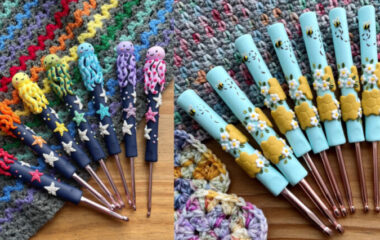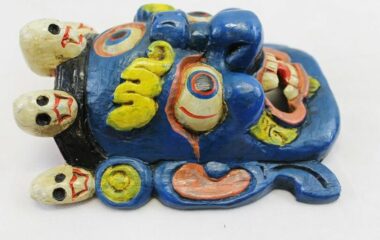The Art of Elegance: Unveiling the Craftsmanship Behind Handmade Italian Suits
Step into the world of elegance and sophistication with our article on the craftsmanship behind handmade Italian suits. Italy, renowned for its fashion and style, has been the birthplace of some of the finest suits in the world. In this article, we dive into the artistry and attention to detail that goes into creating these bespoke garments.
Italian suits are known for their impeccable fit, luxurious fabrics, and timeless designs. The artisans behind these masterpieces devote countless hours perfecting every stitch, ensuring that each suit is a work of art. From selecting the finest materials to hand-cutting the patterns, every step in the process is executed with precision and passion.
The craftsmanship and quality of handmade Italian suits remain unparalleled. When you invest in a suit crafted by these skilled artisans, you are not just buying a garment – you are wearing a symbol of elegance and sophistication. Join us as we explore the fascinating world of Italian suit making, and discover the allure of these exquisitely crafted pieces.
The History of Italian Craftsmanship
The history of Italian craftsmanship is a rich tapestry woven through centuries of artistry and tradition. Italy’s influence on fashion and tailoring dates back to the Renaissance when artisans began to elevate clothing from mere necessity to a form of expression and status. This era saw the rise of the tailor as a respected profession, with cities like Florence and Milan becoming hubs of textile innovation and design. The meticulous attention to detail and commitment to quality that characterized this period laid the foundation for the exquisite craftsmanship we associate with handmade Italian suits today.
As the centuries progressed, Italian craftsmanship evolved, incorporating various influences while remaining rooted in traditional techniques. The emergence of haute couture in the 20th century further propelled Italian tailoring into the global spotlight. Icons such as Giorgio Armani and Dolce & Gabbana emerged, blending classic styles with modern sensibilities. This fusion created an enduring legacy where the artisanal methods of the past coalesce with contemporary fashion trends, ensuring that handmade suits remain synonymous with luxury and sophistication.
Moreover, the post-World War II era marked a significant turning point in the Italian tailoring industry. As the country rebuilt itself, the fashion industry flourished, and Italian suits became a symbol of prosperity and prestige. The craftsmanship involved in creating these garments was not merely a skill; it was an art form that celebrated individuality and style. Today, this heritage continues to thrive, with tailors devoted to preserving the time-honored techniques that have defined Italian craftsmanship for generations.
The Importance of Handmade Suits in Italian Culture
In Italian culture, the handmade suit is more than just clothing; it represents a deep-seated appreciation for quality, style, and personal expression. The act of commissioning a bespoke suit is often viewed as a rite of passage, marking significant life events such as weddings, graduations, or promotions. This custom reflects the Italian belief that clothing should not only fit the body but also the personality of the wearer. Each suit tells a story, encapsulating the wearer’s journey and aspirations, making it a cherished possession.
The significance of handmade suits extends beyond personal expression; it also embodies the cultural values of craftsmanship and authenticity. In a world increasingly dominated by fast fashion, Italians take pride in their artisanal heritage, valuing the time and effort invested in creating a suit that is uniquely theirs. This commitment to quality over quantity fosters a sense of community among tailors and clients alike, as each suit is a testament to the collaborative relationship built on trust and mutual respect.
Moreover, the artistry of Italian suits serves as a symbol of national pride. The world recognizes Italian craftsmanship as a benchmark for excellence in tailoring, making handmade suits a key export that showcases Italy’s rich cultural heritage. Events like Milan Fashion Week further cement this status, drawing attention to the skills and innovations of Italian artisans. Ultimately, the handmade suit is not merely a garment; it is a celebration of Italian culture, tradition, and the relentless pursuit of elegance.
The Art of Selecting the Finest Fabrics for Italian Suits
The selection of fabrics plays a pivotal role in the creation of handmade Italian suits, influencing not only the look but also the feel and longevity of the garment. Italian artisans pride themselves on sourcing the finest materials, often from renowned textile manufacturers located in regions like Biella and Como. These areas are celebrated for their rich textile traditions, producing luxurious wool, cashmere, and silk that are the backbone of bespoke tailoring. The process of selecting fabric is an art in itself, requiring an acute understanding of texture, weight, and color to achieve the perfect balance for each suit.
When choosing fabrics, tailors consider various factors, including the season, occasion, and the client’s personal style. For summer suits, lighter fabrics such as linen or lightweight cotton are favored to ensure comfort in warmer climates. Conversely, heavier materials like flannel or tweed are ideal for winter, providing warmth and a sophisticated aesthetic. The choice of fabric also affects the drape and silhouette of the suit, making it essential for tailors to possess a keen eye for how different materials interact with body movements and shapes.
Additionally, the artistry involved in fabric selection extends to understanding patterns and weaves. Classic houndstooth, pinstripes, and checks are popular choices that add depth and character to a suit. Artisans often engage in discussions with clients to explore their preferences and suggest fabrics that not only resonate with their personality but also enhance their overall appearance. This collaborative approach ensures that every handmade Italian suit is a unique reflection of the wearer, crafted from the finest materials available.
The Meticulous Process of Measuring and Tailoring Italian Suits
The process of measuring and tailoring a handmade Italian suit is a meticulous journey that begins with an in-depth consultation between the client and the tailor. This initial meeting is crucial, as it allows the tailor to understand the client’s style preferences, body shape, and desired fit. Unlike ready-to-wear options, bespoke suits require precise measurements, which are taken with great care. Tailors often use specialized tools to measure various aspects of the client’s physique, ensuring that every curve and angle is accounted for.
Once the measurements are finalized, the next step involves creating a unique pattern tailored specifically to the client. This pattern serves as the blueprint for the suit, and its accuracy is vital for achieving the perfect fit. The tailor often crafts a muslin prototype, or «fitting garment,» which allows the client to try on a preliminary version of the suit. This fitting session is an essential part of the process, as it provides an opportunity for adjustments to be made before the final garment is constructed. Feedback from the client is invaluable during this stage, as it ensures that every detail aligns with their vision.
The journey from measurement to the final fitting is a labor of love that can take several weeks. Tailors dedicate countless hours to hand-stitching and assembling the suit, paying close attention to every seam and detail. This painstaking process results in a garment that not only fits impeccably but also exudes a sense of individuality and character. The culmination of this meticulous process is a handmade Italian suit that embodies the perfect marriage of craftsmanship and personal expression, making it a treasured addition to any wardrobe.
The Craftsmanship Behind the Creation of Italian Suits
The craftsmanship behind the creation of Italian suits is a testament to the artistry and dedication of skilled artisans who have honed their craft over many years. From the moment the fabric is chosen, the process is imbued with a level of care and precision that sets handmade suits apart from mass-produced alternatives. Each step in the creation process is executed with purpose, whether it’s hand-cutting the fabric or meticulously stitching the pieces together. This attention to detail is what transforms an ordinary suit into a remarkable work of art.
One of the defining characteristics of Italian suit craftsmanship is the use of hand stitching. While many manufacturers rely on machines for efficiency, Italian artisans often opt for hand-sewn techniques, particularly for key areas such as lapels and buttonholes. This not only enhances the durability of the suit but also allows for greater flexibility in fit and design. The result is a suit that contours beautifully to the wearer’s body, offering both comfort and style. The artistry involved in hand stitching is something that cannot be replicated by machines, showcasing the unique skills of the tailor.
Furthermore, the finishing touches on a handmade Italian suit are where the craftsmanship truly shines. These details, such as functional buttonholes, pick-stitched lapels, and custom lining, elevate the suit to new heights of sophistication. Artisans often collaborate closely with clients to select personalized elements, ensuring that every suit is not just a garment, but a reflection of the wearer’s personality and taste. Ultimately, the craftsmanship behind Italian suits is a celebration of tradition, skill, and creativity, resulting in pieces that are as timeless as they are elegant.






